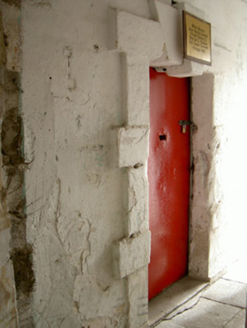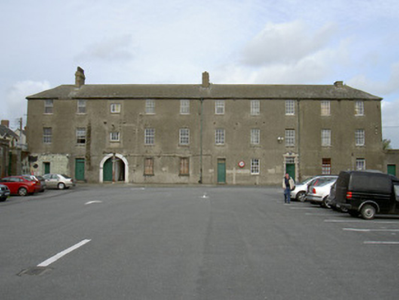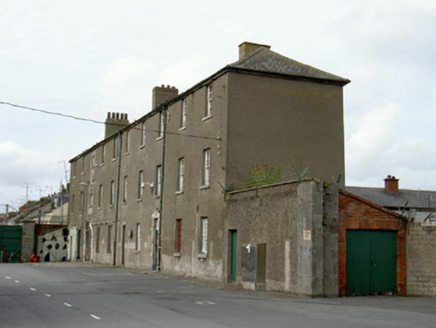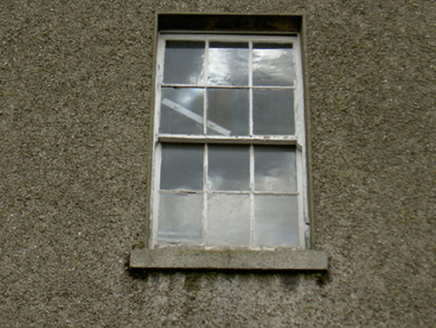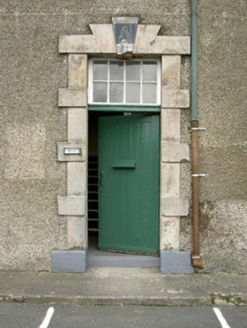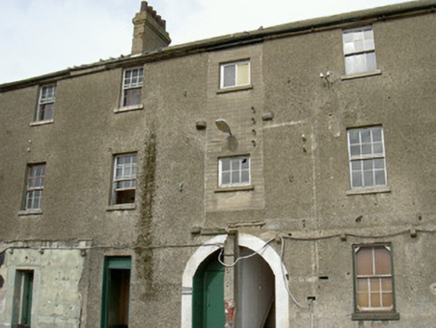Survey Data
Reg No
13706028
Rating
Regional
Categories of Special Interest
Architectural, Social
Previous Name
Dundalk Cavalry Barracks
Original Use
Factory
Historical Use
Barracks
In Use As
Building misc
Date
1780 - 1800
Coordinates
306142, 307540
Date Recorded
29/09/2005
Date Updated
--/--/--
Description
Detached ten-bay three-storey former linen manufacturing building, built c. 1790, converted to use as barracks, c. 1825. Oblong on plan, single-storey lean-to garage to east. Hipped slate roof, stone ridge tiles, clay hip tiles, unpainted smooth rendered chimneystacks, corbelled to west, cast-iron gutters on wrought-iron drive-in brackets, circular cast-iron downpipes. Unpainted roughcast rendered walling to south elevation, smooth render to east elevation, ashlar granite eaves corbel course, loop above round-headed opening to west infilled with concrete block, original bull-nosed granite pivot blocks survive. Square-headed window openings, unpainted smooth rendered slightly-projecting reveals and soffits, granite sills, painted timber six-over-six sliding sash windows. Square-headed door openings, tooled ashlar stone Gibbsian surround to east doorway, unpainted smooth rendered reveals and soffit to central doorway, painted slightly-projecting smooth rendered reveals and soffit to west doorway, deeply recessed opening to extreme west doorway, painted timber vertically-sheeted doors, plain-glazed overlights, metal door to extreme west opening, granite steps to door thresholds; segmental-headed arched opening with central projecting brick pier, painted smooth rendered surround. Situated to north-west of military barracks, entrance gates to west.
Appraisal
This building occupies a prominent position within the barracks and is of historic interest both for its association the British Army and its earlier use by Huguenot settlers in the eighteenth century when the site was a linen manufactory. Some early details survive including sash windows, vertically-sheeted doors and two fine Gibbsian stone door surrounds. The built-up loop towards the west end is of particular interest as is the lock-up cell at the extreme west.
